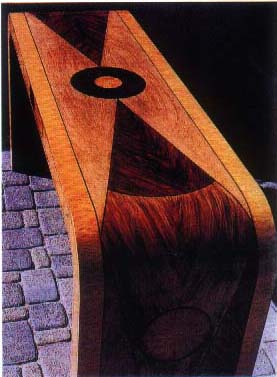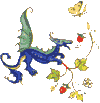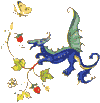|
Since
Howard's father was also an artist -- he executed murals
for the La Jolla hotel La
Valencia
-- the younger Howard was exposed to the techniques and history
of art from an early age. Traveling in Europe, he absorbed
the lessons of frescoes by Tiepolo and Piero della Francesca.
He received a degree in industrial design from Art Center
College of Design in 1984. "My reason for painting is a simple
one," he says. "There is nothing I would rather do."
Maria and Daniel Levin, who call themselves
Chimera, specialize in a range of faux finishes for
furniture and interiors. Maria Levin trained as a painter
at the British Columbia Art College and worked in a realist
style as a muralist. Six years ago she took courses at the
Pardon School of Specialist Decoration in New York, and now
she concentrates on faux finishes of lapis, malachite,
stonework and rare woods.
|

ABOVE: Maria Levin's faux-bois table
finish, commissioned for a residence, simulates the graining
of five exotic woods, among them amboyna and kingwood
|
She recently designed the
marquetry for a table that incorporates faux finishes
of kingwood, rosewood, bird's-eye maple, burl walnut and
amboyna. "You can't even get some of these woods today," she
says. When she tires of the exacting work of finishes, she
returns to murals. Her husband, Daniel, has a background
in furniture restoration and now specializes in gilding.
Chimera
is based in Forest Knolls, near San Francisco, and over the
past three
years,
Levin has discovered one important difference between her
fine art and her decorative art. "I'm making a living now,
and I couldn't do that working as a fine artist," she explains. "Yet
I'm working in a field I love, with antiques and the whole
history of art. People have used these techniques through
the ages, which makes me feel that I'm in tune with what
has gone before.
|




